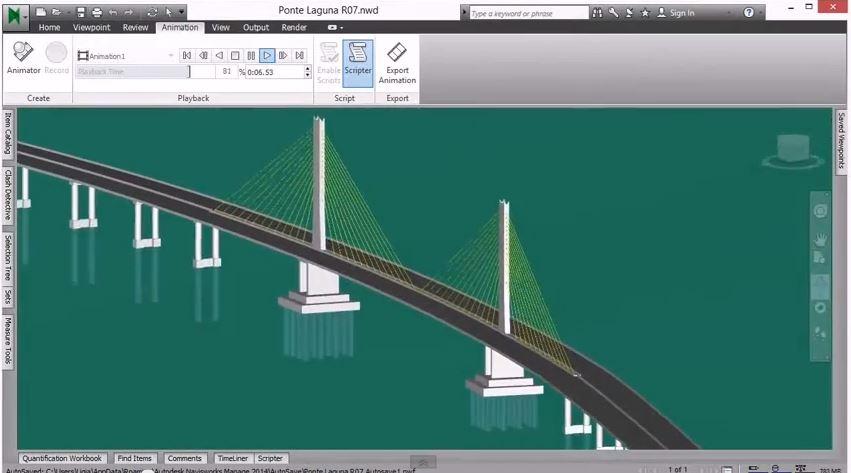Infraworks Boosts Government Infrastructure Projects in Brazil

Autodesk InfraWorks™ software (formerly Autodesk Infrastructure Modeler) is making a difference for governments around the world. Rather than undertaking new projects blindly, these tools allow planners and public sector decision makers to see clearly what a potential project will look like, how it will impact the local environment, and how it can be accomplished structurally. Recently, InfraWorks tools were used to accomplish two major infrastructure projects in Brazil, which were profiled at Autodesk’s Infrastructure Symposium in late 2013.
How InfraWorks Tools Work
In Limeira, Autodesk’s Infrastructure Design Suite was used in planning for a major highway project with five overpasses. The tools allowed planners to complete design and analysis to communicate options to the owner. InfraWorks tools were also used in the planning phase of construction for Laguna Bridge, Brazil's longest bridge, which was built by Camargo Correa, a construction and engineering firm based in Sao Paulo.
Before a building project begins, Autodesk InfraWorks helps planners and engineers communicate the design intent and ecological impact of a project. It does this by enabling them to create realistic, immersive, in-context 3D models of project areas that can be used to evaluate multiple proposals side-by-side with public stakeholders. “Because Autodesk InfraWorks models can include the full 3D context of the surrounding area of a project, like a city or even an entire country, engineers and planners can get a good sense of the project constraints, challenges, hazards to avoid, as well as opportunities in real time, enabling them to make better decisions about the constructability of a project,” says Justin Lokitz, senior product manager, Infrastructure & Collaboration Products.
On the Ground in Brazil
In Limeira, for instance, InfraWorks and the Infrastructure Design Suite were used to model the five highway overpasses. The tools allowed engineers to conduct design work and analysis in order to clearly communicate options to the government owner.
Laguna Bridge is part of a Brazilian highway duplication project to convert portions of highway BR101, also known as the Translitoranea Highway, into a multi-lane divided highway. The highway runs north and south along Brazil’s eastern coast and crosses over the Laranjeiras Canal near the city of Laguna, Santa Catarina. The Laguna Bridge, at 2.8 kilometers, will be the third longest bridge in the country and when complete, the bridge and the accompanying highway duplication effort will increase traffic capacity on the road, facilitate the flow of goods within Brazil, and promote better trade with other South American countries. The new cable-stayed bridge will be able to support four lanes of traffic with shoulders on each side.
When Camargo Correa approached the Laguna Bridge project, the company needed to communicate the ecological impact of the bridge. It also needed to demonstrate the constructability of the project. Planners turned to InfraWorks tools including AutoCAD Civil 3D, Autodesk Revit, Autodesk 3Ds Max Design, and Autodesk Navisworks to virtually review and coordinate the project, to plan construction, and simulate construction in four dimensions. Camargo Correa, which is leading a consortium to build the bridge, also uses InfraWorks tools to develop model-based workflows and intelligent models to help the far-flung team collaborate more closely and improve coordination of the project.
The virtual models that are made possible by Autodesk modeling tools are helping the firm identify economic, environmental, and constructability issues to improve the project's predictability, productivity, and profitability, company executives say. In addition, model-based visualizations and construction simulations are improving communication among team members, as well as with other project stakeholders, including government leaders and the general public.
To see the InfraWorks in action on the Laguna Bridge project, take a look at a video below:
By Nancy Mann Jackson
Nancy Mann Jackson is a freelance journalist who writes regularly about local government and sustainability issues. Learn more about her at www.nancyjackson.com. 
















































